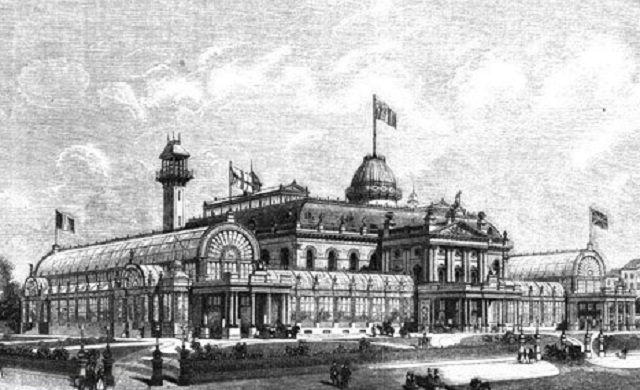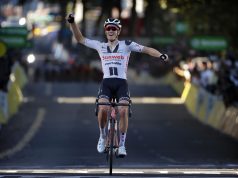By Graham Healy
When the road season comes to a close, it means it’s the time of the year for other branches of the sport to become the focus of attention. In addition to cyclo-cross, six-day racing is another popular type of racing over the winter, and it’s continental European cities such as Ghent and Munich which have the biggest events.
However, six-day racing first started in Great Britain back in London in 1878, and two years later, a six-day race was organised in Dublin.
The Dublin Six-Day race, or The Great Six Days’s Professional and Twelve Hours’ Amateur Bicycle Contest, to give it it’s official name was scheduled to take place in the Earlsfort Skating Rink, and it was to take place from the 9th until the 14th of August 1880.
The skating rink was adjacent to the Exhibition Palace and Winter Garden Buildings which had been commissioned in 1862 by Sir Benjamin Lee Guinness. His intention was to “provide a permanent exhibition of Irish arts and manufactures and also reading rooms, flower gardens, and a gas-lit winter garden, for public enjoyment.” It was opened by the Prince of Wales on the 9th of May 1865.
An asphalt track was laid for the racers prior to the event, with some of the track under cover and other parts in the open. A rope separated the riders from the crowd, and spectators were charged 6d admission.
The aim of the race was for cyclists to cycle as far as they could during the six days. Cyclists were expected to ride from 11am to 11pm for each of the six days, and the cyclist who covered the furthest distance would receive prize money of £60, with second place receiving £30 and third £15.
Six professional riders, all from England, lined up to start in front of what The Freeman’s Journal described as “a small company of spectators.”
To give an indication of the speed at which they rode, after four hours of competition on that first day, the leading rider, T. Andrews, had covered 54 miles. The attendance increased as the day went on, and the crowd also had other entertainment to keep them amused as “the band of the 84th Regiment played a capital selection.”
During the event, W. Philips also decided to tackle the 25-mile record, which stood at 1 hour 19 minutes and 54 seconds. On the second day, the crowd increased significantly. By the end of that day, T. Andrews led the race with a distance of 303 miles.
Two days later, Philips made his record attempt on the 25-mile mark, but failed by two minutes. Meanwhile, Andrews would hold on to his lead until the end and his total distance covered over the six days was 716 miles and 2 laps.
The crowds had died off towards the end of the contest and The Freeman’s Journal reported “Financially the speculation of the visitors was a huge failure. There was no presentation of prizes, and the ending of the affair had associated with it more than one unpleasantness.”
It’s not clear what that “unpleasantness” was, but it was the one and only running of the Dublin Six-Day. The Winter Gardens were sold in 1882 and moved to England, and the site where the Six-Day race is now The Iveagh Gardens.









